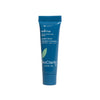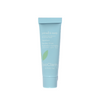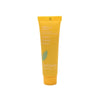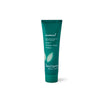Does Ice Help Pimples & Acne?
By Abby Vinas
Acne Treatment
•
6 Comments

Pimples and blemishes plague most people at least once in their life. From early teens to late in life, some people can’t seem to rid their skin of those pesky red marks, whiteheads, cysts, blackheads, papules, pustules, nodules or other skin blemishes.
Out of the hundreds of miracle cures advertised on the internet, you may have come across the idea of ice. Does ice help acne?
Whether you have severe pustules or mild acne, the answer to your issue might be in your freezer.
How Ice Can Help
Many people overreact to mild acne with various acne treatments, masks, and other skincare products that use harsh chemicals. While they believe that these kinds of products are improving their skin, they can actually cause inflammation and even more acne. Using ice on acne in the form of ice cubes or an ice pack is an often-overlooked solution that can work in some cases. The benefits of applying ice on pimples and acne are that it helps reduce pain and swelling, the appearance of pore size, and scarring, and washes away dirt and debris.
Reduces Pain and Swelling
Whether you’ve tried all the DIY treatments imaginable or you want to rid your skin of acne with the least amount of invasiveness, using ice for acne may be your best choice. Have you ever iced a bruise, sprain, burn or other injury? When you’re injured, redness and heat appear because red and white blood cells are rushing to the affected area. This in turn creates swelling and inflammation. The swelling compresses nerves and is the cause of pain.
This is similar to the inflammation caused by acne. Severe forms of cystic acne, pustules and nodules can be lodged so deep in the skin that it can compress a nerve. This is what can cause pain. Cystic acne may reoccur in the same place due to an allergic reaction or in accordance to a woman’s monthly cycle. This can cause pain and irritation around the nose, chin, neck and back.
Using ice for acne can be beneficial as a treatment option due to its ability to cool the skin, numb nerve endings and slow down blood flow. This can make the injury more bearable as it heals. Ice can provide instant temporary relief to the painful swelling due to deep-set acne. Icing cystic acne is often overlooked in light of other severe or harsh treatment options.
Reduces Appearance of Pores
Many believe that opening pores is possible by exposing your skin to heat and steam, but this is just a myth. What is true is that steam and hot water dilates pores to make them appear larger and leaves space for sweat, bacteria, dirt and dead skin cells to find their way in. If you do sit in a sauna or other warm environment, be sure to avoid touching your face and wash it gently when you leave.
Cold, on the other hand, reduces the appearance of pores. Contrary to popular belief, cold weather and cold water can't close them -- the size of your pores cannot be changed. However, cold can tighten them, making them appear smaller and decreasing the likelihood of irritants getting in. Many dermatologists recommend alternating between a warm compress and cool compress to exercise the pore and get the plug out. If you have clear skin but want to prevent acne, use only a cool compress or cool water.

Reduces Scarring
Those who experience cystic acne or severe acne are more likely to be left with acne scars. These scars form when the breakout heals and the body produces too much or too little collagen.
A study performed in 2014 showed that icing reduces scarring. Researchers found that the study participants experienced a bigger improvement in their acne scarring when using a cryoroller, a hand-held skincare tool that uses cold temperatures to offer relief to the skin and help improve skin health.
Washes Away Dirt and Debris
Placing ice directly on the skin isn’t recommended. Ice can stick to skin and cause a cold burn, which can aggravate acne. Instead of applying ice right on top of the skin, create a compress and let the ice melt. Hold the ice for only a few minutes and then wash your face with cool water. Cool water acts as an astringent that also washes away debris.
How Acne Forms
Before we begin to understand how ice can help treat acne, we first need to discuss how acne forms.
Each hair follicle in your skin--you have at least 5 million-- houses glands that produce an oil that keeps your skin moist and healthy. These glands are called sebaceous glands and they produce an oil called sebum. When the follicle is healthy, the hair grows normally and the sebum acts as a natural moisturizer that prevents skin from getting dry, cracked and damaged.
The sebum naturally excretes from the pore and onto the surface of the skin. Those with oily skin experience an excess production of sebum, while those with dry skin experience an insufficient production of sebum. Sometimes dead skin cells, dirt, grime, oil and bacteria get into the pore and clog it. When the pore is clogged, the sebum can’t release and the skin swells. When the skin above the pore remains intact, it creates a whitehead. If the skin opens the debris oxidizes and turns the acne into a blackhead. Other types of acne may form depending on the severity of the infection.
Why Acne Forms
Acne can turn up on the skin for a variety of reasons. Excess androgens—a sex hormone produced in both men and women—can cause an excess production of sebum, which can in turn increase the likelihood of acne. Other reasons include living in a dirty environment such as a polluted city or greasy and steamy kitchen. Unhealthy foods, re-worn sweaty clothing and harsh skin treatments can also cause or exacerbate acne.
Clearer skin in as little as two weeks.
A simple 3-step regimen that uses salicylic acid to battle breakouts and rescue stressed skin instead of punishing it.
Try Some
Ways to Use Ice
As mentioned above it’s not advised to apply ice directly on the skin. Here are a few better options for icing pimples. Create a cold compress by placing the ice in a Ziploc bag and covering it with a paper towel or a wash cloth. If they're small enough, you can apply ice on pimples at an angle so that a corner rests on the affected area. Never leave a compress on for more than five minutes, or less if you have sensitive skin. There are a variety of other ways to use ice for acne that we'll dive into further.
Create an Oil-Infused Compress
Incorporate soothing essential oils into your ice. Freeze lavender, rose water, tea tree oil, rosemary, peppermint or lemon into the ice cube or popsicle for the desired effect. The essential oils not only relax the senses but it calms inflammation as well.

Incorporate Cool Water Into Your Facial Routine
If you have mild acne then you don’t need to apply ice. Simply splash cool water on your face at the end of your morning and nightly. Your facial skin likely doesn’t need anything stronger than a light face wash, so use the gentlest exfoliator and splash if off with cool water before patting your skin dry.
Mild and severe acne alike can benefit from ice or a cool compress. If you seek a gentle treatment to reduce inflammation on your skin, apply a cool compress on your skin for a few minutes in the morning and at night to reduce the appearance of pores. If you have body acne, alternate between a warm compress and cool compress to ease the pimple out.
Don't Rely on Ice Alone
While using ice for acne can be beneficial, it's important to note that it's just a single component of skincare. Maintaining a proper daily skincare routine is essential so remember to continue washing your face regularly, treating acne and pimples with non-toxic and plant-based products like a salicylic acne treatment gel, and keeping your skin hydrated. Be mindful of other lifestyle factors that may be contributing to your blemishes, such as lack of sleep, stress, and a diet full of unhealthy foods. Understanding the type of acne you have and using a well-rounded approach will give you the best results and a healthy, youthful glow.
Clogged or Congested Pores?
A complexion perfecting superfood masque that instantly tautens and tightens skin without over-drying, while making pores petite.
Get Refreshed
Abby Vinas
Abby Vinas has long been an active member of the holistic health community, advocating in favor of its benefits to both our physical and emotional well-being. Her commitment to leading a healthy lifestyle has made her an authority on self-care practices. Abby is passionate about fitness, nutrition, and proper skincare, and is also an avid lover of avocado toast and dog-petting.














Ice🐌🦋🦎🦎
Try Icing with a SoothieQ. Mess-free, Safer than ice, and so much more convenient too.
Pores don’t open and close.
Try a SoothieQ. Much more easier, safer and convenient than using ice.
I need help how can you get rid of pimples on your face?